| 4 |
Talk in the series 'Producing the Future: Art and Globalization' organized by the Center for Place, Culture (April 24 2003) Sabine Bitter / Helmut Weber |
<< >> |
||
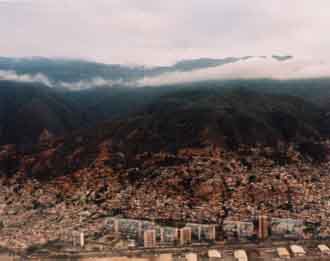 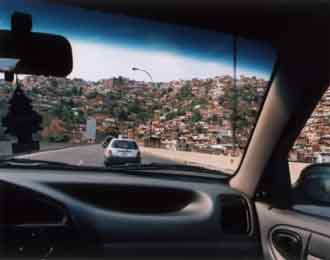 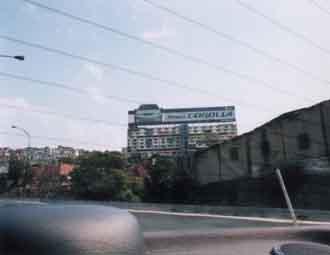 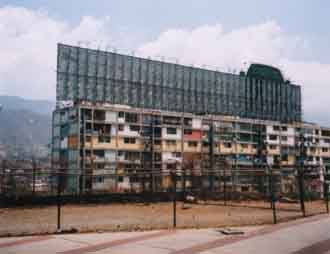 |
Caracas - from the air (port) to downtown From March 03 until September we are participants in the Caracas Case Project on Culture and the Informal City. The Caracas Case Project is an ideal and challenging site for us to apply investigations into the unique history, present, and future of Caracas. Over the last ten years our artistic work has been concerned with architectural sites and urban structures which held, at various times, social promises or even utopian visions. Central to that concern has been our negotiation of a visual politics for urban images and architectural representations through photographic, video and new media projects. The following images show first an aerial view from La Guaira, a coastal city close to Caracas ---followed by a series of snapshots driving the highway from La Quaira airport to downtown Caracas. The construction of the highway that connects the city to the airport was a part of a major effort in the late-40s and through the 50s to improve and modernize the city´s infrustructure. Both Nelson Rockefeller and Robert Moses had their hands in this development and it was Moses who designed the new main traffic arteries of the city, including this road linking Caracas and its airport. Next to the highway you see the first impressions of superbloques of the large-scale modernist housing project from the 50s, El 23 de Enero. |
|||
Entering the city you experience an urban landscape which is structured by obviously antagonistic building processes which produce the formal and informal parts of the city: architecture seems to represent 1:1 the social, economic and political conditions of the people living there. Clear borderlines of social conflicts and class struggle are drawn by the architecture. In relation to the Caracas Case's intended studies on the culture of the informal city, our current goal is to create representations of Caracas' particular urban landscapes that evoke something about the politics of their production. By paralleling previous formal concepts of collective housing and city planning with visualizations of Caracas' present urban restructuring processes, we will look for “modes of translation” between lived social expression and their spatial representations. The politics of production have to be related to questions of power-relations and to processes of domination and exploitation. |
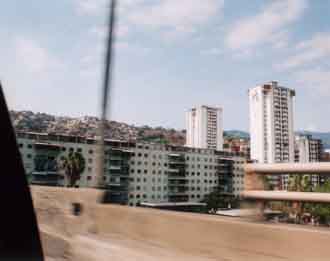 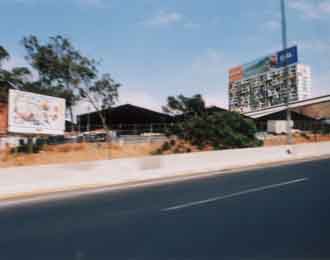  |
|||